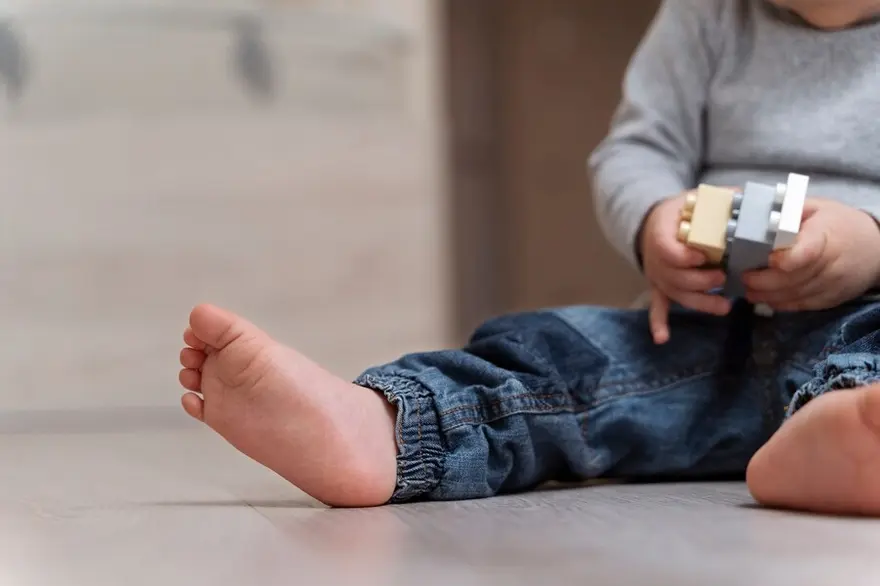Preventive Healthcare
Swaddling A Baby: Benefits, Risks and Seven Safety Tips
7830 Views
0

Swaddling is an age-old practice, and its popularity has once again gained momentum in the last decade. However, there are several contradicting views about swaddling babies. Some claim it to be no less than a boon for new parents, and some do not find it safe enough. Let us bring some clarity to this practice by enlisting the risks and benefits associated with it. We will also give you seven safety tips for safe swaddling.
What is Swaddling?
Swaddling is the act of wrapping a baby with a piece of cloth in a specific manner to make the baby feel at ease. A newborn baby is not yet familiar with the outside world, and the different sounds, movements, and lights often startle the baby. Swaddling gives the baby an enclosed feeling and makes it feel safe, similar to being in the mother’s womb.
Where Can You Get Baby Swaddling Blankets?
Baby swaddling blankets are easily available nowadays in all big baby stores. You can also choose from a wide range of options available on popular online shopping websites like Amazon.
There are different types of swaddling clothes. They can range from a simple square or rectangular piece of cloth to a sac-like or zippered blanket.
What is The Correct Technique for Swaddling A Baby?
Follow these steps for swaddling to make your baby feel snuggled and comfy:
- Neatly spread out the swaddle blanket on a flat surface and fold one top corner of the blanket 4-6 inches down.
- Lay the baby on its back in the center of the blanket, so its neck is on the folded corner.
- Gently hold the baby’s right arm on the chest and bring the left corner of the cloth across the baby’s body, passing it below the right arm and chest and tucking it under the lower back and bottom.
- Repeat the same step with the other side of the blanket.
- Fold the remaining bottom part of the swaddling cloth under the baby.
- The swaddle should be loose enough to let the baby fold its legs into the natural frog position.
What are The Benefits of Swaddling?
Swaddling a baby seems like a lifesaver for sleep-deprived new parents because of the following benefits:
- Promoting long, uninterrupted sleep for newborns: Swaddling recreates a womb-like safe feeling for a baby and snuggles it into uninterrupted sleep.
- Reduces startles: Babies have not yet developed motor control and involuntarily jerk their arms or legs, which startles them and wakes them up from sleep. The gentle pressure that swaddling creates prevents these movements and decreases the startle reflex in babies, allowing them a peaceful sleep.
- Pacifies baby: If your baby cries a lot without any apparent reason, you must try swaddling. Swaddling a baby pacifies it, calms it down, and reduces the crying spells.
- Eliminates the need for additional blankets: Swaddling a baby eliminates the need for an extra blanket and other comfort items such as baby pillows or soft toys in the baby crib. According to experts, these increase the risk of sudden infant death syndrome (SIDS)
- Helps with colic: The safe and comforting feeling that a swaddle provides a baby has been shown to soothe the pain and discomfort caused by colic in babies.
- Safe sleeping position: Infants should always sleep on their back and not on their side or stomach, as these positions increase the risk of SIDS. Baby swaddling ensures the correct baby position.
Know About: Double Marker Test For Pregnancy
Risks of Swaddling
Why is swaddling so good for babies, why are some people against it? Well, it is because of some of the risks that accompany swaddling. Let us find out what these are.
- Hip dysplasia: The baby’s hips and knees stay stretched out and do not get the space to move and bend the legs if swaddled tightly. This may result in hip dysplasia or dislocation of the hips.
- Overheating: Swaddling can cause your baby’s body to heat up due to the layering. This can be prevented by choosing cool cloth materials such as cotton or muslin for swaddling a baby.
- Decreased arousals: Decreasing arousals is one of the main reasons behind swaddling a baby, but this could be one thing that goes against it too. Reduced arousal has been linked to an increased risk of SIDS because the baby may not wake up even if he or she is suffocating.
- Dependency: Babies may become dependent on swaddling and may find it difficult to sleep without it. This might pose a problem because, eventually, they will need to wean off it.
When to Stop Swaddling?
It is essential to stop swaddling as soon as your baby shows the first sign of rolling over, which can be as early as two months, though it varies with each child. When a swaddled baby rolls over on its stomach, there is a greater risk of suffocation.
Seven Safety Tips for Swaddling
Follow these tips for swaddling your baby safely:
- Do not wrap the swaddle too tight. It should allow movement of the legs to prevent the risk of hip dysplasia.
- Do not use double blankets and over-swaddle to keep the baby warm. This may lead to overheating.
- Secure the swaddle nicely. Swaddle cloth coming off poses a risk of suffocation for the baby.
- Stop swaddling when you see your baby is trying to learn to roll over.
- Prefer using swaddle sacks designed specifically for swaddling babies as they snuggle the baby but have enough room to allow leg movement.
- Always lay the baby on its back to sleep after swaddling.
- Prefer swaddling a baby only during sleep time and letting the baby free at other times allows for proper growth.
Conclusion
By following the safety tips mentioned above, you can minimize the risks of swaddling and reap all its benefits. If you find it difficult to master the technique of baby swaddling or are afraid that you might do it wrong, the specific swaddling sacs come with a zipper that makes it so easy to swaddle safely. Not all babies like to be swaddled, but if your baby does, enjoy some sleep time together!













1701259759.webp)









 WhatsApp
WhatsApp